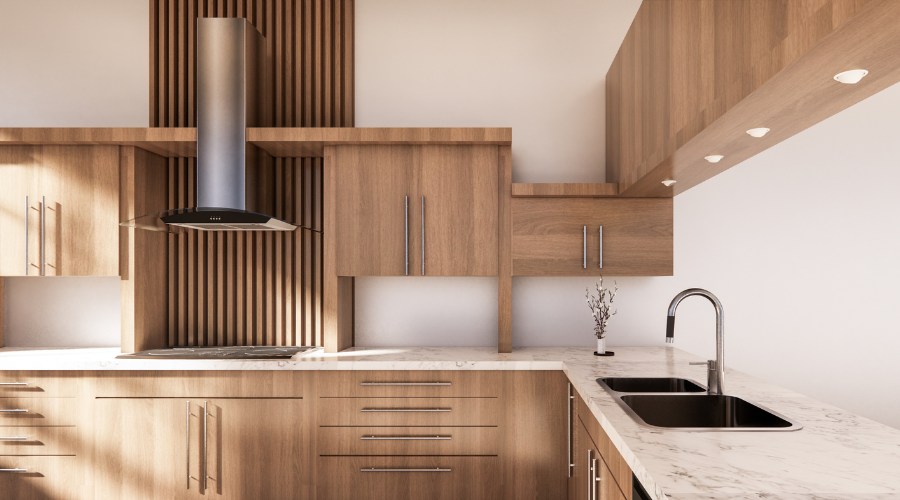5 Essential Tips for Designing a Family-Friendly Kitchen
Designing a family-friendly kitchen goes beyond aesthetics - it’s about creating a space that’s both functional and welcoming for everyone in the household.
Whether you’re cooking for young children, entertaining guests, or simply want a comfortable space for the family to gather, a well-designed kitchen can make all the difference.
Here are five essential tips to help you create a kitchen that works for your family.
1. Prioritise Safety
Safety in your kitchen is essential when you’ve got little ones running around.
Safety is paramount when designing a family-friendly kitchen, especially if you have young children running around.
There are several ways to ensure the kitchen is a safe environment for all ages:
Childproofing: Install safety locks on drawers and cupboards that contain sharp objects, cleaning supplies, or other hazardous materials.
Rounded Edges: Opt for countertops and tables with rounded edges to avoid sharp corners that could cause injury.
Stovetop Safety: Consider a stovetop with a safety lock feature or invest in induction hobs, which stay cooler than traditional gas or electric stoves.
Non-slip Flooring: Choose flooring that’s slip-resistant, especially in areas where spills are common, such as near the sink and fridge.
By taking these precautions, you can reduce the risk of accidents and make the kitchen a safe space for everyone.
Looking to transform your kitchen into a family-friendly hub? Cwtch Haus can help you design a space that’s both stylish and safe for your family. Get in touch with us today to start your kitchen renovation.
2. Create Ample Storage
A cluttered kitchen can be overwhelming, especially when it’s used frequently by the entire family. One of the key elements of a family-friendly kitchen is ample storage to keep everything organised and easily accessible.
Open Shelving: Open shelves make it easier to grab frequently used items like plates, cups, and cooking utensils. Just make sure to keep these shelves tidy.
Pull-out Drawers: Pull-out drawers and baskets make it easier to access deep cupboards, reducing the need to dig through everything to find what you need.
Vertical Storage: Consider using vertical space for storage. Tall cupboards or floating shelves can maximise the use of available space without taking up too much room.
The more organised your kitchen is, the more efficient it will be, allowing you to focus on what matters - spending time with your family.
3. Make It Easy to Clean
Minimising clutter in your kitchen can help to keep it as clean as possible.
A family-friendly kitchen should be easy to maintain, particularly if you’re cooking multiple meals a day or entertaining guests regularly. To keep your kitchen clean with minimal effort, focus on materials and designs that are practical.
Easy-to-Clean Countertops: Choose countertops made from materials that are durable and simple to clean, such as quartz or granite. Avoid porous materials like marble, which can stain easily.
Splashbacks: Install splashbacks behind your stovetop and sink. They not only add a touch of style but also protect your walls from splashes and spills, making them easier to clean.
Flooring: Choose flooring that can handle spills and is easy to mop up. Vinyl, tile, and laminate are all great options for families.
The key is to choose surfaces that resist staining and make cleaning as simple as possible, so you can spend less time scrubbing and more time with the family.
4. Create a Functional Layout
A family-friendly kitchen needs a layout that works for the way your family functions. Whether you're cooking meals while helping with homework or preparing snacks for the kids, the layout should make everything easily accessible and efficient.
The Work Triangle: The kitchen work triangle (the relationship between the sink, stove, and fridge) is a tried-and-true layout that makes meal prep more efficient. Make sure there’s a clear path between these key elements.
Open Space: Leave plenty of space for people to move around comfortably, particularly in high-traffic areas like the path from the fridge to the stove.
Island or Breakfast Bar: A central island or breakfast bar provides additional workspace and a place for family members to gather, making the kitchen a hub for socialising.
Designing the layout around your family’s needs will create a space that’s functional for both cooking and spending time together.
5. Incorporate Family-Friendly Features
To ensure your kitchen is functional, leave plenty of space for people to move around comfortably.
A family-friendly kitchen is one that adapts to everyone’s needs, from little ones to adults. Consider adding features that make it easier for your family to enjoy the space.
Low Cupboards and Drawers: If you have young children, installing lower cupboards and drawers can help them become more independent in the kitchen. They’ll be able to grab their own snacks or even help with meal prep.
Multifunctional Appliances: Invest in appliances that save time and energy. A double oven, for example, is great for cooking large meals or multiple dishes at once. Similarly, a dishwasher with a half-load setting can be useful when cleaning up after smaller meals.
Seating Options: Make sure your kitchen has seating options for everyone. A breakfast nook, stools at the island, or a table for family meals can all make the space more welcoming and functional.
Adding these thoughtful features will make the kitchen more enjoyable and accessible for the whole family.
Designing a family-friendly kitchen requires a balance of style, safety, and functionality. By prioritising storage, ease of cleaning, and a layout that suits your lifestyle, you can create a space where your family feels at home.
If you’re looking for expert guidance in designing your dream kitchen, Cwtch Haus is here to help. Reach out today, and let’s bring your vision to life.
Written by Cara Erasmus for Cwtch Haus



